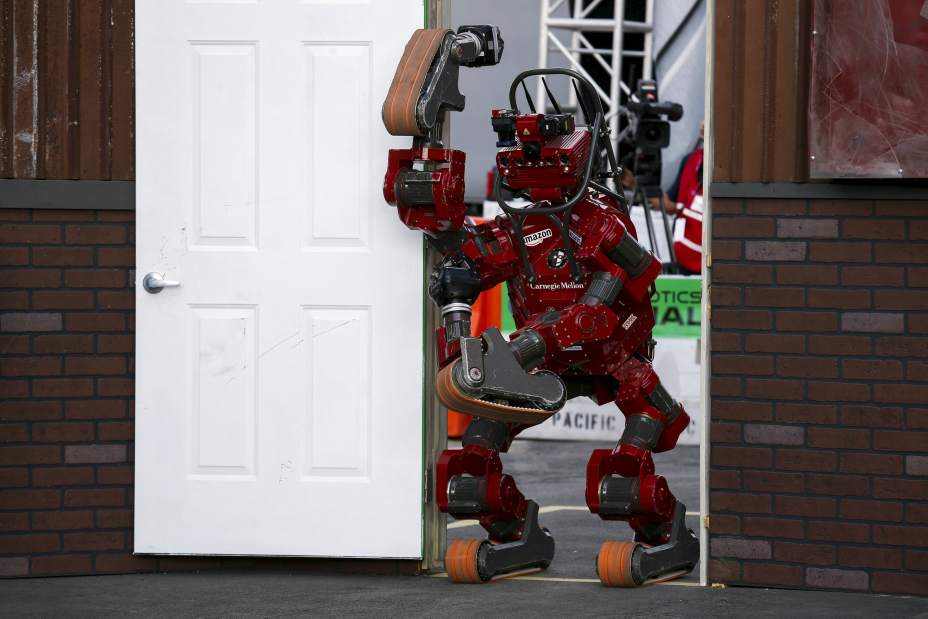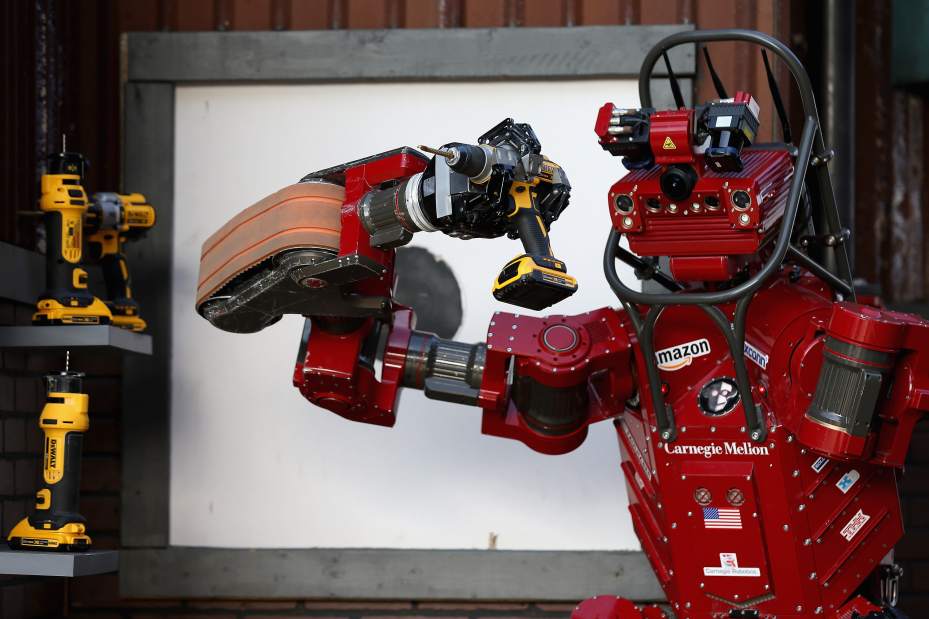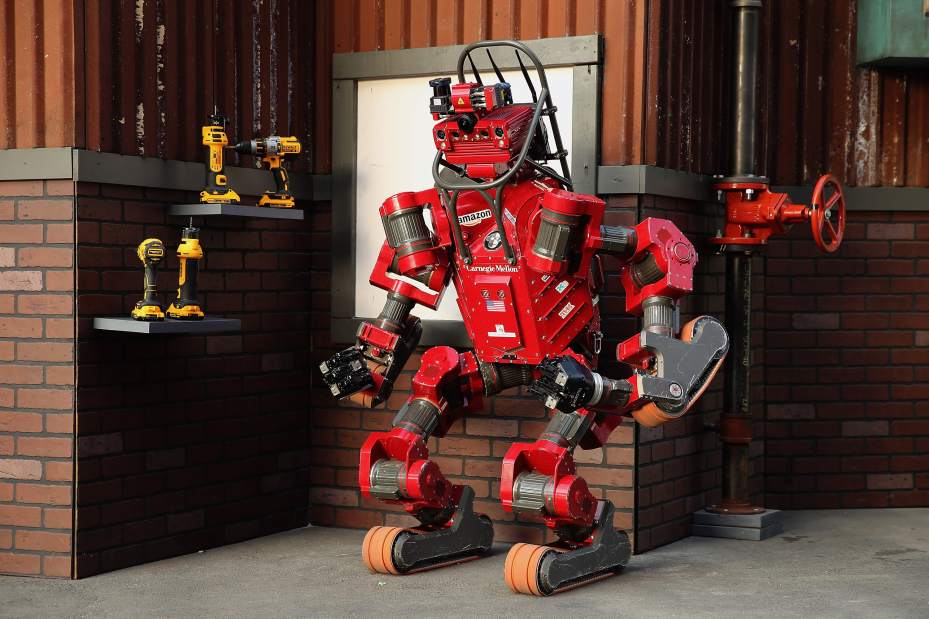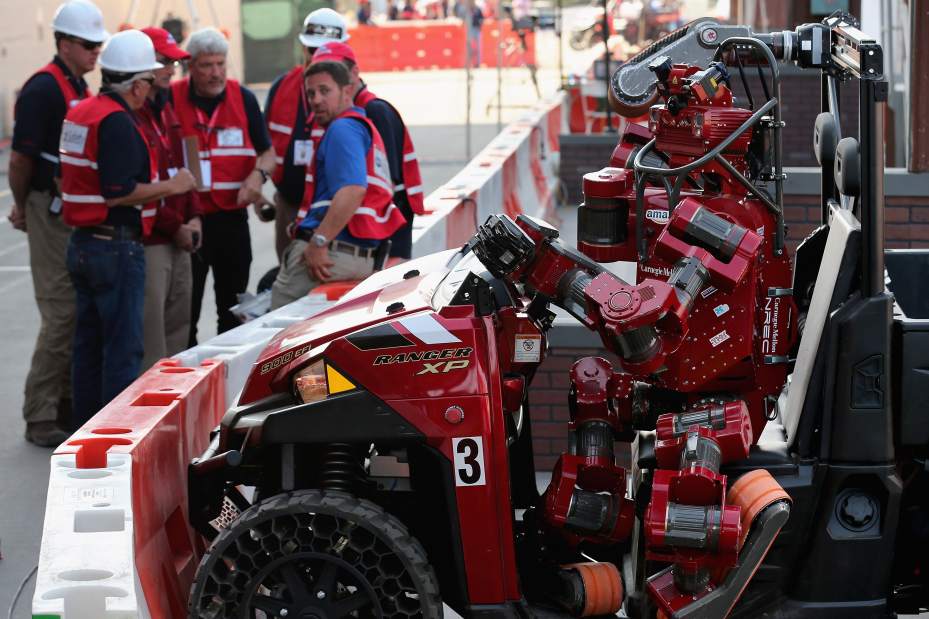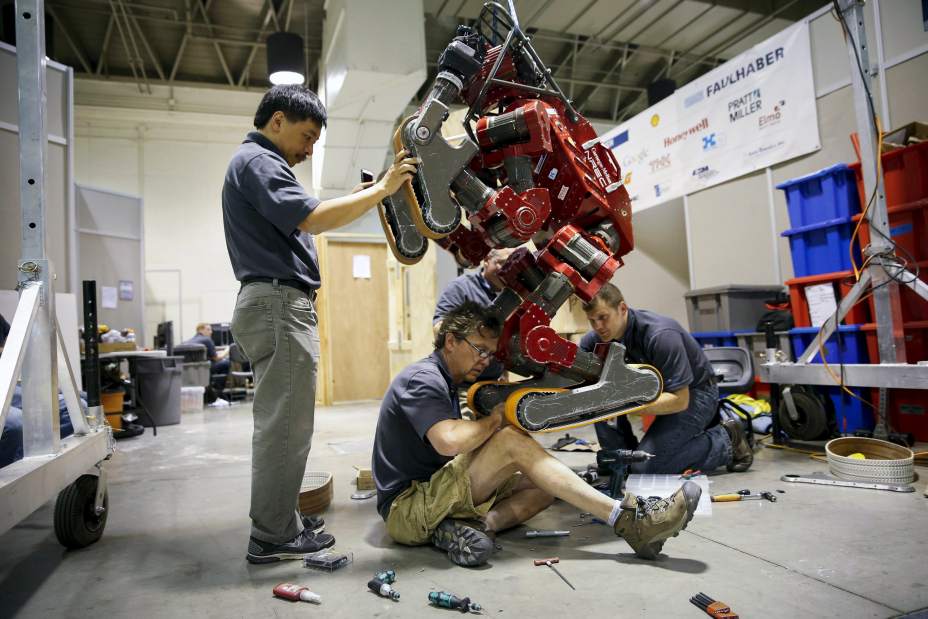CMU robot takes 3rd place in DARPA disaster response skills contest
The online highlight reels from the 2015 DARPA Robotics Challenge mostly consisted of high-tech rescue robots tipping, toppling and crashing as they tried to complete a series of tasks during the two-day competition in Pomona, Calif.
So it was a good sign that the robot designed and built by a team from Carnegie Mellon University did not appear often in those highlights. It motored its way through tasks slowly but surely to finish in third place and win a $500,000 prize.
“We posted the best time on the first day, but there was a whole score of teams right on our tail. Two other teams were able to beat our run the second day,” said Tony Stentz, leader of the Tartan Rescue team controlling CHIMP, or CMU Highly Intelligent Mobile Platform.
Two dozen robots participated in the final round of the challenge, hosted by the Defense Advanced Research Projects Agency, that simulated how the machines could assist humans in responding to disasters such as the 2011 crisis at the Fukushima nuclear power plant in Japan.
The robots had to drive and exit a car; open and move through a door; close a valve; pick up and use a power tool to cut through a wall; clear or cross over debris; turn off a switch; and climb a set of stairs.
CHIMP completed all of the jobs, including a surprise task of unplugging a cord and moving it to another outlet, in 55 minutes, 15 seconds on Friday, but couldn't finish all eight jobs within the hourlong time limit Saturday.
“The plug turned in the robot's hand, and it was difficult to manipulate it to fit without dropping it,” Stentz said of the first run. The robot's remote operators had to move extremely slowly to get the plug back into place, he said, but managed it.
CHIMP surprised the team when it fell as it opened a door Friday. The contest's rules allowed teams to stand their robots back up and take a 10-minute penalty, but the Tartans had to decide whether CHIMP could get back up on its own in less time than that.
“We had to make a gut decision right then. It was my decision on whether to take the reset or let the robot try it,” said Clark Haynes, software lead for Tartan. CHIMP stood up on its own in seven minutes, the only fallen competitor to do so without a lift.
“The robot instantly became a crowd favorite,” Haynes said.
Instead of walking on two vaguely human-like legs as many other robots in the challenge did — including the top two finishers — CHIMP had tank treads on its limbs and could drop to all fours to roll over hazards.
“I think CHIMP is a solid robot. It has the form, function and capability to do a lot,” Stentz said. “The robot and controllers, as a team, were really impressive in being able to work together and solve problems.”
Further research could go into making the robot hardier so it could operate in true disasters, but with the DARPA competition done, the project will be wound down, and Tartan Rescue's 60 members will move to other projects or work on licensing the technology to private partners, Stentz said.
“The ultimate goal is for companies to see the technology, come to the National Robotics Engineering Center (CMU's facility in Lawrenceville) and see ways to further develop it,” Haynes said.
A more human-like machine built by Daejeon, South Korea's Team KAIST won the top prize of $2 million, beating CHIMP's time by nearly 11 minutes. The second-place finisher and winner of $1 million was a robot built by Boston Dynamics, It was programmed and operated by the Institute of Human and Machine Cognition of Pensacola, Fla.
Another CMU-affiliated team worked with Worcester Polytechnic Institute to field a robot named Warner, which finished seventh and was the only robot not to fall during either competition run, Haynes said.
“These robots are big and made of lots of metal, and you might assume people seeing them would be filled with fear and anxiety,” Gill Pratt, DARPA program manager and the competition organizer, wrote a statement. “But we heard groans of sympathy when those robots fell. And what did people do every time a robot scored a point? They cheered!”
Matthew Santoni is a staff writer for Trib Total Media. He can be reached at 412-380-5625 or msantoni@tribweb.com. The Associated Press contributed to this report.

